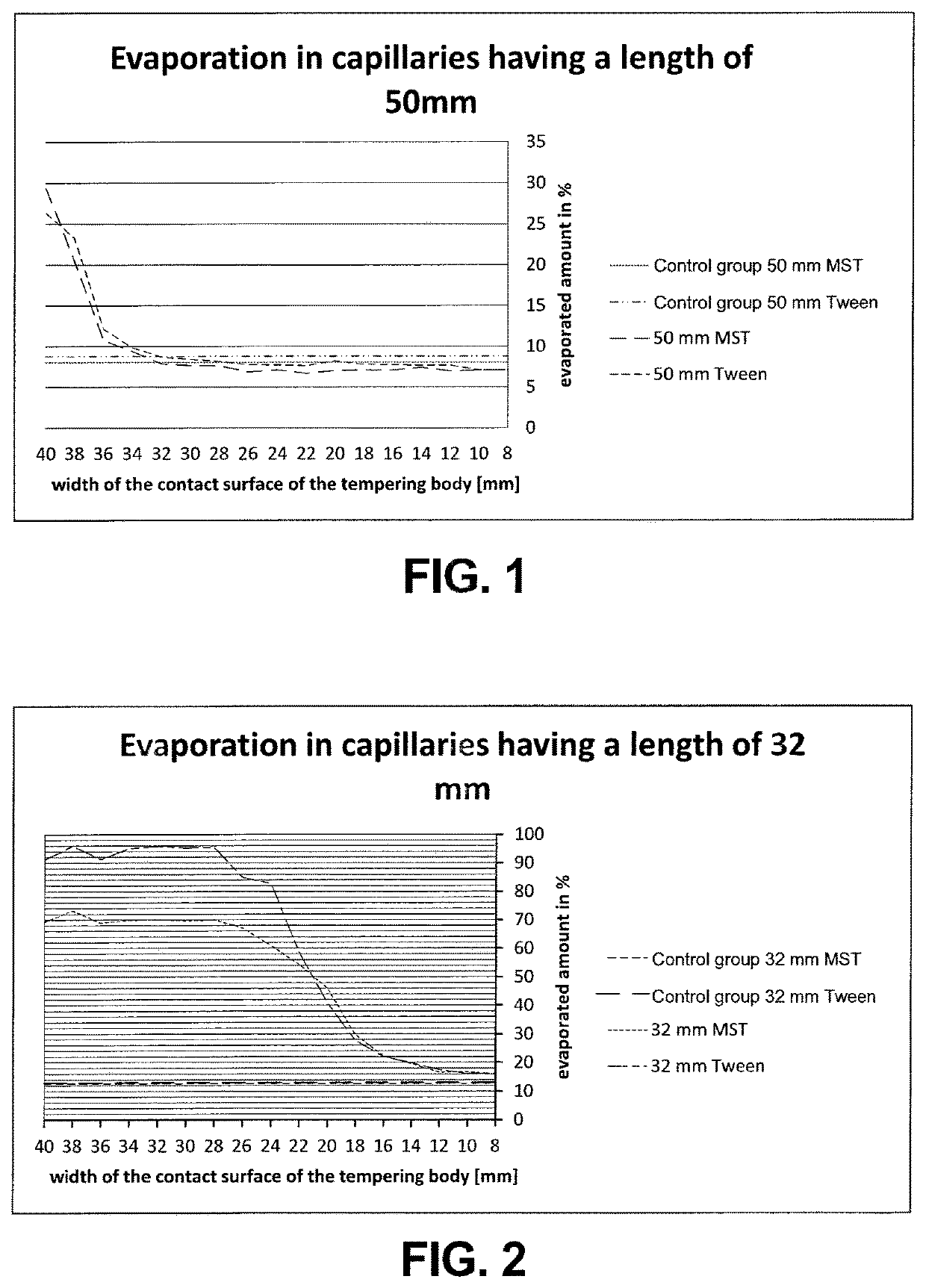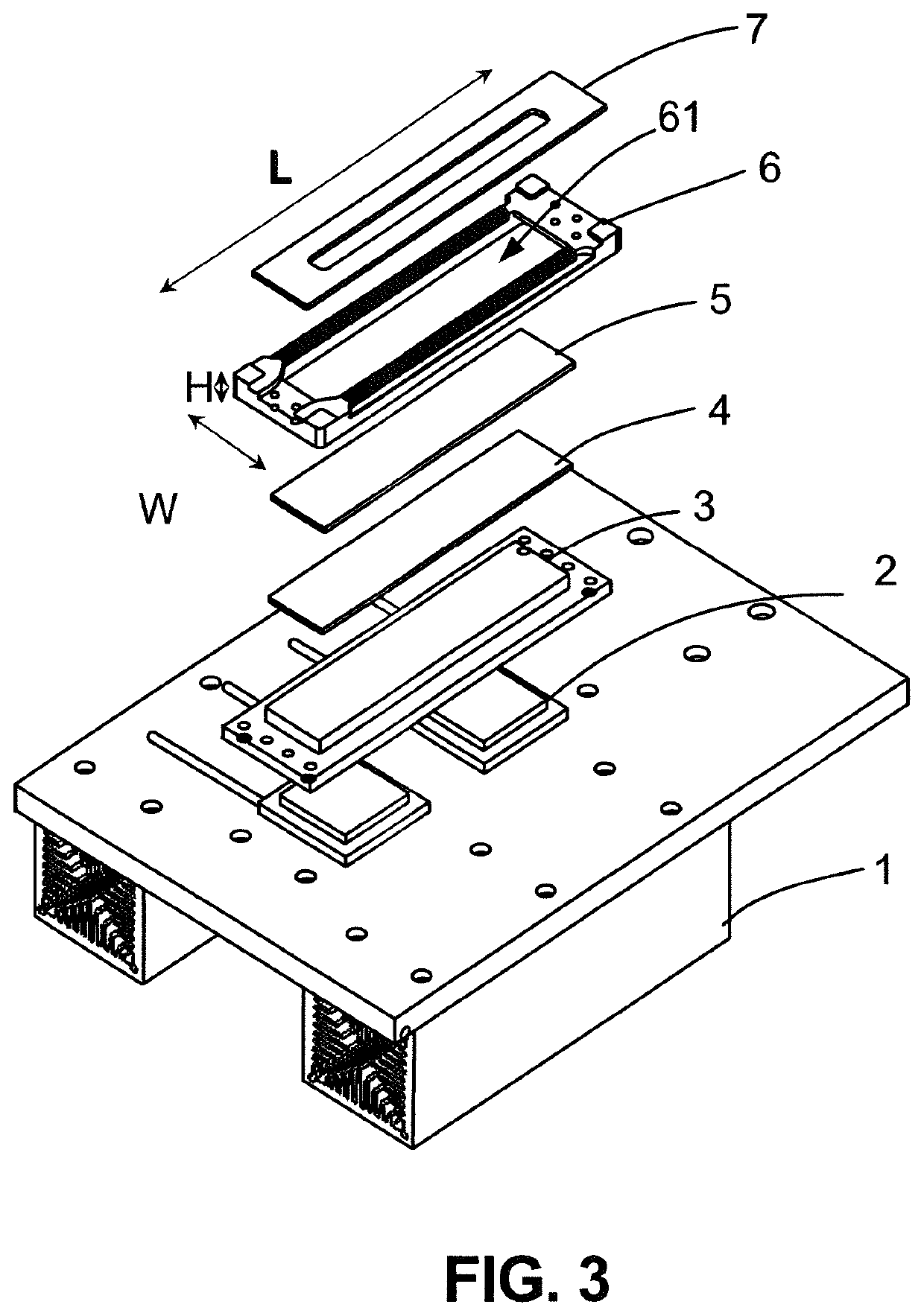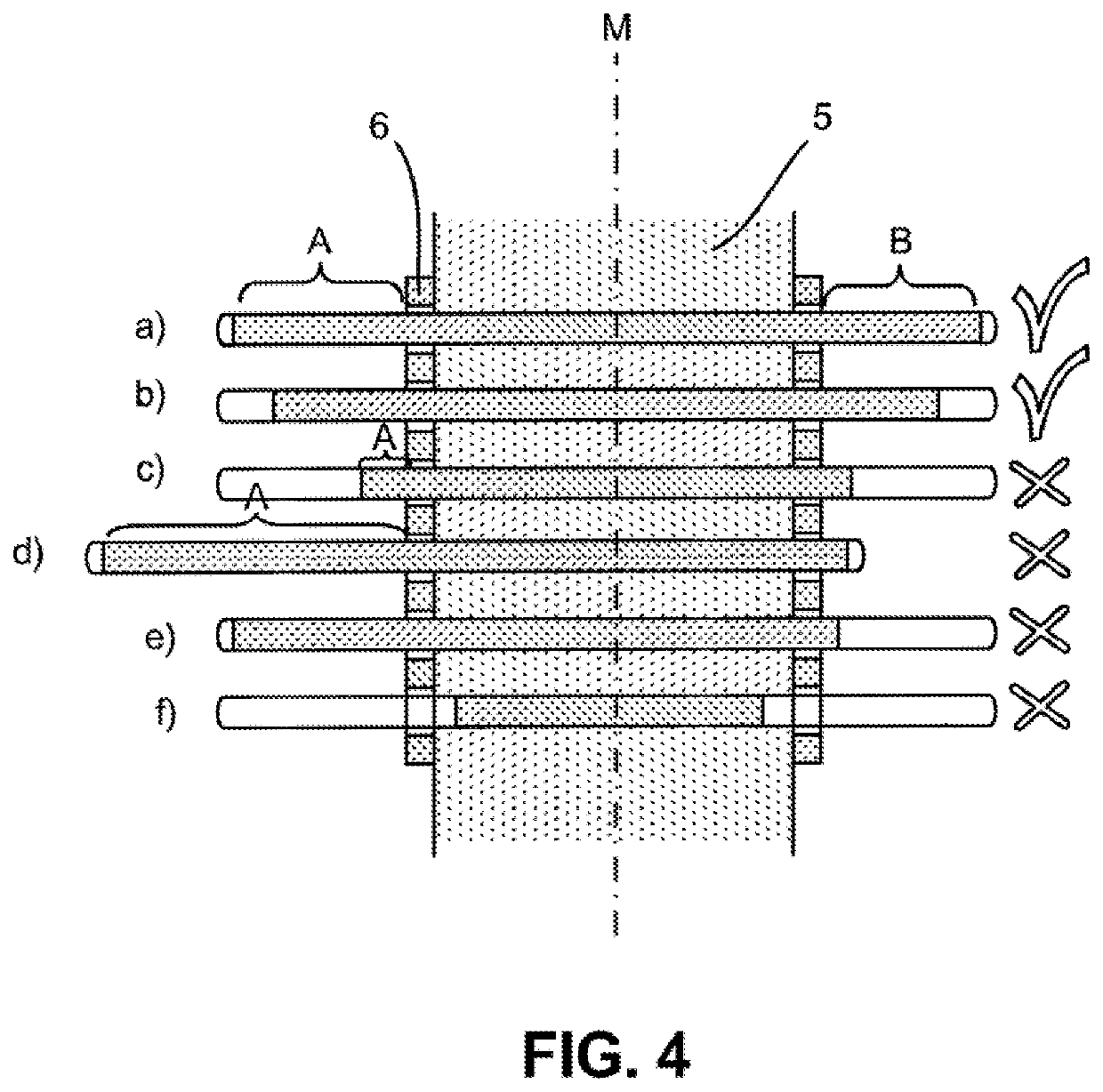Method and system for tempering capillaries without sealing them
a technology of tempering capillaries and sealing methods, applied in the direction of material analysis, measurement devices, instruments, etc., can solve the problems of significant disadvantages of sealing methods, inability to measure at increased temperatures over a longer time period, and disturbance of currents in liquids, etc., to achieve small volume, good defined volume, and small volume
- Summary
- Abstract
- Description
- Claims
- Application Information
AI Technical Summary
Benefits of technology
Problems solved by technology
Method used
Image
Examples
Embodiment Construction
[0061]The invention generally relates to a system and method for tempering a capillary, preferably several capillaries at the same time, which are filled with samples to be examined According to the invention, the capillaries are made of glass. Preferably, the capillaries are made of a material having a similar, not considerably less and / or not very / considerably higher thermal conductivity than the fluid in the capillaries. Glass is preferred also because it has a similar thermal conductivity as an aqueous solution. It is particularly preferred since the heat is transferred to the solution by means of glass, i.e. in case the thermal conductivity of the capillary material is too low, the solution in the capillaries is tempered not correctly and / or not fast enough. In case the thermal conductivity is too high, the heat is transported towards the ends of the capillary and then again leads to an increased evaporation. In the following, the thermal capacities of some materials are listed...
PUM
 Login to View More
Login to View More Abstract
Description
Claims
Application Information
 Login to View More
Login to View More - R&D
- Intellectual Property
- Life Sciences
- Materials
- Tech Scout
- Unparalleled Data Quality
- Higher Quality Content
- 60% Fewer Hallucinations
Browse by: Latest US Patents, China's latest patents, Technical Efficacy Thesaurus, Application Domain, Technology Topic, Popular Technical Reports.
© 2025 PatSnap. All rights reserved.Legal|Privacy policy|Modern Slavery Act Transparency Statement|Sitemap|About US| Contact US: help@patsnap.com



